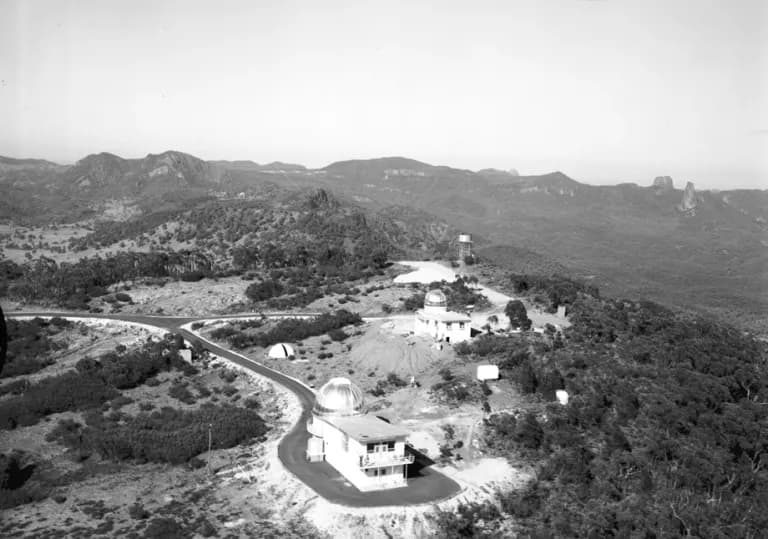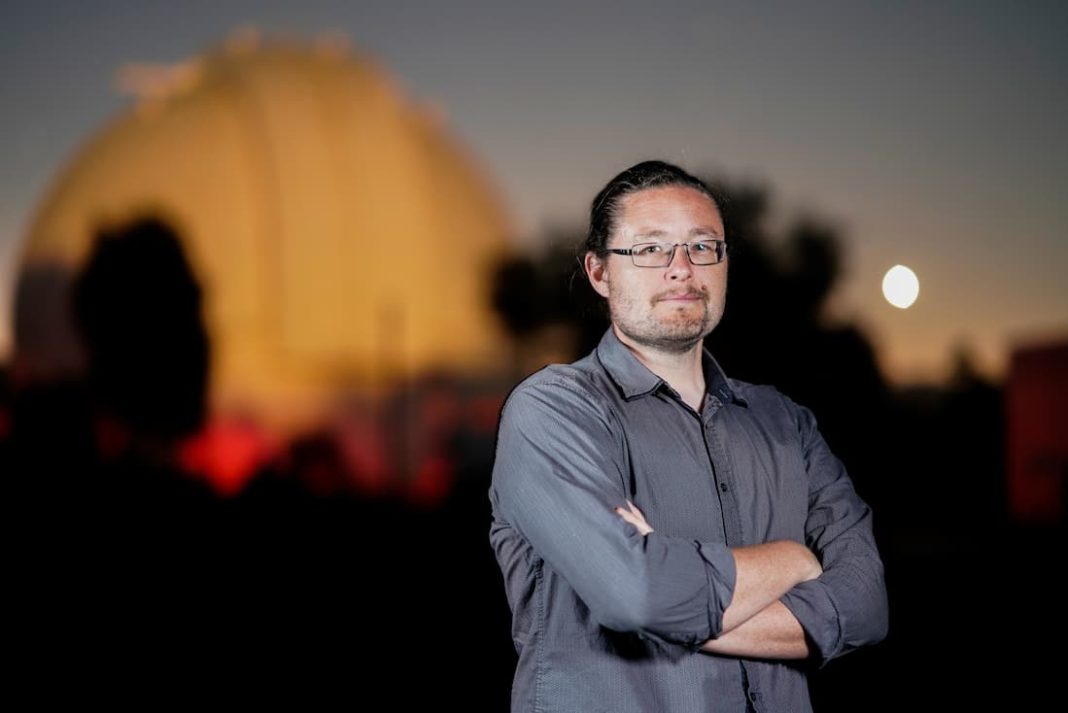The Mount Stromlo Observatory has stood tall in Canberra for 100 years.
The observatory is described as a beacon of astronomical discovery, ranging from pioneering research to educating the next generation of astronomers. Explore its rich history, cutting-edge facilities, and ongoing scientific endeavours.
It is one of the oldest institutions and the first federal building in the ACT, opening 11 years after Canberra was founded.
Mt Stromlo is run by the Australian National University’s (ANU) Research School of Astronomy and Astrophysics.
ANU astrophysicist and cosmologist, and Research School of Astronomy and Astrophysics Fellow, Dr Brad Tucker said the site was involved in two of the biggest discoveries about the universe in the past century – dark matter and dark energy.
“These two things make up about 95 per cent of everything in the universe,” Dr Tucker said.
“(Astronomer professor) Ken Freeman at Mt Stromlo was one of the main people to prove that dark matter exists and (astronomer Professor) Brian Schmidt led a team that discovered dark energy – which won him the Nobel Prize in Physics in 2011.”
Dr Tucker said these discoveries were just the tip of the iceberg.
“The first atlas of the sun came from Mt Stromlo in the 1920s. We measured the age and size of the universe first in the 1950s, and then again in the ’80s, and now today,” he said.
“One of the oldest, or first stars created, was found in the 1950s.
“We broke our own record in the 2000s, then again a decade later.”

Dr Tucker said the observatory had changed from being a government department studying the sun, to building optical munitions for gunsights during World Word II, and building large telescopes.
“And now the hub for space and telescope development in Australia,” he said.
“We build cameras and equipment for telescopes all around the world – a legacy of ours from the 1920s.
“At Mt Stromlo, we have not only observed new objects or answered some of the large questions about the universe, but also build the equipment to do it.”
Dr Tucker said Mt Stromlo’s history was interwoven into Canberra.
“For instance, the pine trees around Mt Stromlo were planted around Canberra in 1915,” he said.
“The first Commonwealth building in Canberra is the first telescope building, the Oddie Telescope, on Mt Stromlo – constructed in 1911.”

Dr Tucker said he believed community members were interested in astronomy because of Canberra’s still relatively dark skies.
“We can go out from our house and see plenty of stars and bits of the Milky Way,” he said.
“The desire to look up, enjoy, wonder, and be inspired by the awesomeness of the universe is something that most can relate to.
“And it is a very Canberra thing – if you go to Sydney or Melbourne, that connection to the universe is lost.”
The milestone has been celebrated throughout the year. The next event is a talk between Professor Schmidt and journalist Annabel Crabb on 25 November at ANU’s Llewellyn Hall. Bookings can be made at rsaa.anu.edu.au/news-events/events/mount-stromlo-100-brian-schmidt-annabel-crabb.
An open day at the Weston Creek site is expected to run in 2025.
100 years at a glance
Established as the Commonwealth Solar Observatory in 1924, although astronomical observations had been carried out on the mountain as early as the previous decade, with the Oddie telescope constructed on Mount Stromlo in 1911, according to the ANU website.
After the establishment of the ANU, joint staff appointments were made and graduate studies undertaken; the first PhD degree, and first DSc degree awarded by the university (other than honorary degrees) were in astronomy.
A formal amalgamation took place in 1957 when Mt Stromlo Observatory left the Commonwealth Department of the Interior and joined ANU.
In the 1960s, the name was changed again, becoming Mount Stromlo and Siding Spring Observatories (with the establishment of a second observatory in Coonabarabran, New South Wales).
Together, Mount Stromlo and Siding Spring Observatories form one of the leading optical astronomical observatories in the world. Their main areas of research were in stellar and galactic astrophysics, particularly, the structure and evolution of planets, stars and galaxies, the origin and development of the universe as a whole, and the physics of the tenuous material between the stars.

In the 1990s, Australian astronomers gained access to the 10-metre class telescopes being built around the world, which helped astronomers to be at the forefront of astronomical research.
The bushfire of 18 January 2003, the McIntyres Hut fire which crossed into the ACT, destroyed all the telescopes, the library, and workshops on Mt Stromlo. In the following years, the site was redeveloped.
The Research School of Astronomy and Astrophysics now has about 90 staff members mostly on site at Mt Stromlo, which includes about 45 astronomers and about 30 graduate students undertaking PhD studies at the school.
Canberra Daily would love to hear from you about a story idea in the Canberra and surrounding region. Click here to submit a news tip.



